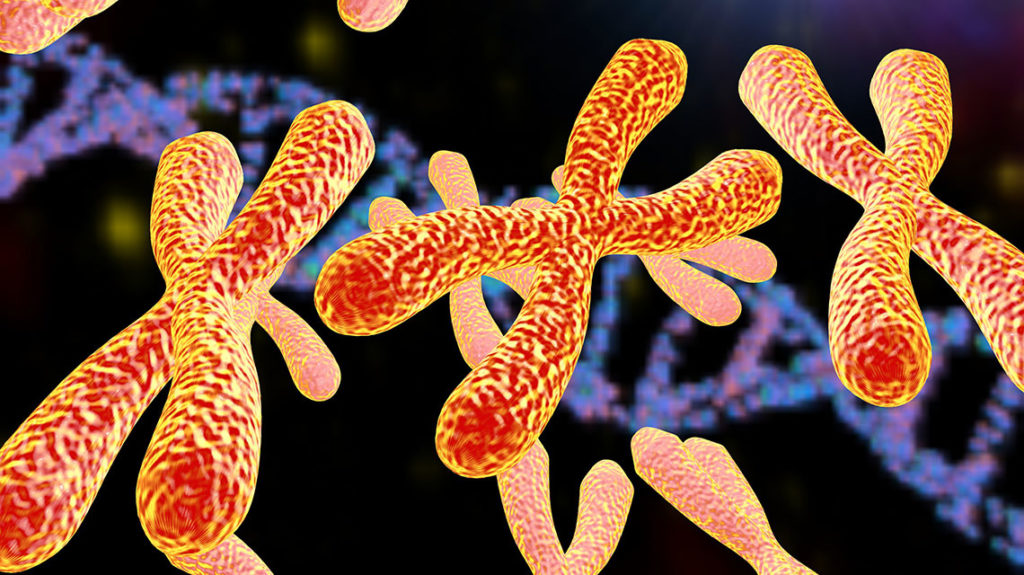Children Testing Positive for X-ALD on Updated Newborn Screening Panels Require Long-Term Monitoring
Children Testing Positive for X-ALD on Updated Newborn Screening Panels Require Long-Term Monitoring https://pediatricsnationwide.org/wp-content/uploads/2021/03/chromosomes-1024x575.jpg 1024 575 Katie Brind'Amour, PhD, MS, CHES Katie Brind'Amour, PhD, MS, CHES https://pediatricsnationwide.org/wp-content/uploads/2021/03/Katie-B-portrait.gif- January 06, 2022
- Katie Brind'Amour, PhD, MS, CHES

A condition soon to be added to the Ohio Newborn Screening Panel may not affect children for years or even decades after diagnosis, and follow-up involves more than just the infant.
Hospitals across the country collect a card of small drops of blood from a baby’s heel shortly after birth. These “bloodspots” are used to screen infants for a number of health conditions that can be better treated when identified early. Most of the diseases on newborn screening (NBS) panels require testing, treatments or dietary changes (such as specialty infant formulas) that must begin urgently. In contrast, X-linked adrenoleukodystrophy (X-ALD), set to launch on Ohio’s screening panel in 2022, may not require treatment for years—if ever.
X-ALD was added to the federal Recommended Uniform Screening Panel (RUSP) in 2015 and, after Ohio’s state NBS advisory council recommended it be added to the state’s screening , laboratory equipment preparations and practical planning commenced. When screening for X-ALD officially begins in Ohio next year, primary care doctors will have a new type of follow-up to facilitate.
“A lot of the other conditions we test for in newborn screening are recessive conditions, so there may be siblings who are affected, but not parents,” says Margie Ream, MD, PhD, a pediatric neurologist at Nationwide Children’s Hospital who serves on the state’s NBS advisory council and encouraged approval of the addition of X-ALD to Ohio’s panel. “X-ALD is linked to the X chromosome, so the mom, uncles and grandparents are all people we might discover as having X-ALD after testing the baby, in addition to siblings. Genetic counselling is really important for this diagnosis.”
Another benefit for X-ALD screening is that since the disease may not start for several years, a newborn identified might lead to the diagnosis of an older brother who is asymptomatic or early in the disease course.
The condition affects about 1 in every 10,000-20,000 live births. It prevents the body from breaking down very long chain fatty acids, which then accumulate in the brain, nervous system and adrenal gland. Over time, this damages the membrane covering the nerve cells.
Most males (50-86%) develop adrenal insufficiency, and about 35-40% develop childhood cerebral X-ALD due to lesions in the brain that progress rapidly. This brain disease presents in early childhood or elementary school and leads to behavioral problems, loss of coordination, abnormal muscle tone, and further neurodegeneration leading to premature death.
X-ALD can also cause adrenal myeloneuropathy due to spinal cord disease, which presents as changes in gait, numbness, weakness and bladder and bowel dysfunction. This condition occurs in most young men with X-ALD. For some males, adrenal insufficiency or adrenal myeloneuropathy can be the only expression of the disease. About 60% of females who carry an X-ALD mutation also eventually develop slowly progressive adrenal myeloneuropathy in adulthood.
“It’s a lot for families to take in when they have this little baby—their son may or may not develop this brain condition, and there’s nothing we can do to tell you right now if he’ll develop it,” says Dr. Ream. “It’s a big burden to put on families, but X-ALD can present with just a little ADHD or behavioral disturbance and then progress rapidly. The first signs can be subtle and mild, and can go unrecognized unless people are aware.”
Dr. Ream now serves as director of the new Leukodystrophy Clinic at Nationwide Children’s. The program offers a medical home to children with leukodystrophies (of which there are more than 30), with multidisciplinary care available from specialists such as psychologists, social workers, neurologists, genetic counsellors, palliative care and complex care. The center is one of only a dozen nationally to be a Leukodystrophy Care Network Certified Center.
At Nationwide Children’s, children with X-ALD will be referred to the Leukodystrophy Clinic for an initial appointment to talk more about the condition and what to expect in terms of monitoring. Boys will also be referred to endocrinology to monitor for adrenal insufficiency. After diagnosis, boys should get an MRI of the brain at 12-18 months of age and again a year later. Starting at the age of 3, they should have an MRI every 6 months until about the age of 12, then annually thereafter. Mothers of diagnosed children as well as females born with one affected X chromosome require occasional monitoring during adulthood.
“Some children will be identified as at-risk who will never develop symptoms, but some can have severe brain disease in early childhood,” says Dr. Ream, who also develops evidence summaries for conditions under consideration for the federal RUSP. “The point of repeat MRIs is to identify brain disease before any symptoms manifest, so that severe brain disease can be prevented through treatment.”
Current treatment options for X-ALD include stem cell transplant, physical therapy, and medications for adrenal problems. Gene therapy trials are also underway.
About the author
Katherine (Katie) Brind’Amour is a freelance medical and health science writer based in Pennsylvania. She has written about nearly every therapeutic area for patients, doctors and the general public. Dr. Brind’Amour specializes in health literacy and patient education. She completed her BS and MS degrees in Biology at Arizona State University and her PhD in Health Services Management and Policy at The Ohio State University. She is a Certified Health Education Specialist and is interested in health promotion via health programs and the communication of medical information.
-
Katie Brind'Amour, PhD, MS, CHEShttps://pediatricsnationwide.org/author/katie-brindamour-phd-ms-ches/April 27, 2014
-
Katie Brind'Amour, PhD, MS, CHEShttps://pediatricsnationwide.org/author/katie-brindamour-phd-ms-ches/April 27, 2014
-
Katie Brind'Amour, PhD, MS, CHEShttps://pediatricsnationwide.org/author/katie-brindamour-phd-ms-ches/April 27, 2014
-
Katie Brind'Amour, PhD, MS, CHEShttps://pediatricsnationwide.org/author/katie-brindamour-phd-ms-ches/April 28, 2014
- Posted In:
- Clinical Updates
- In Brief







